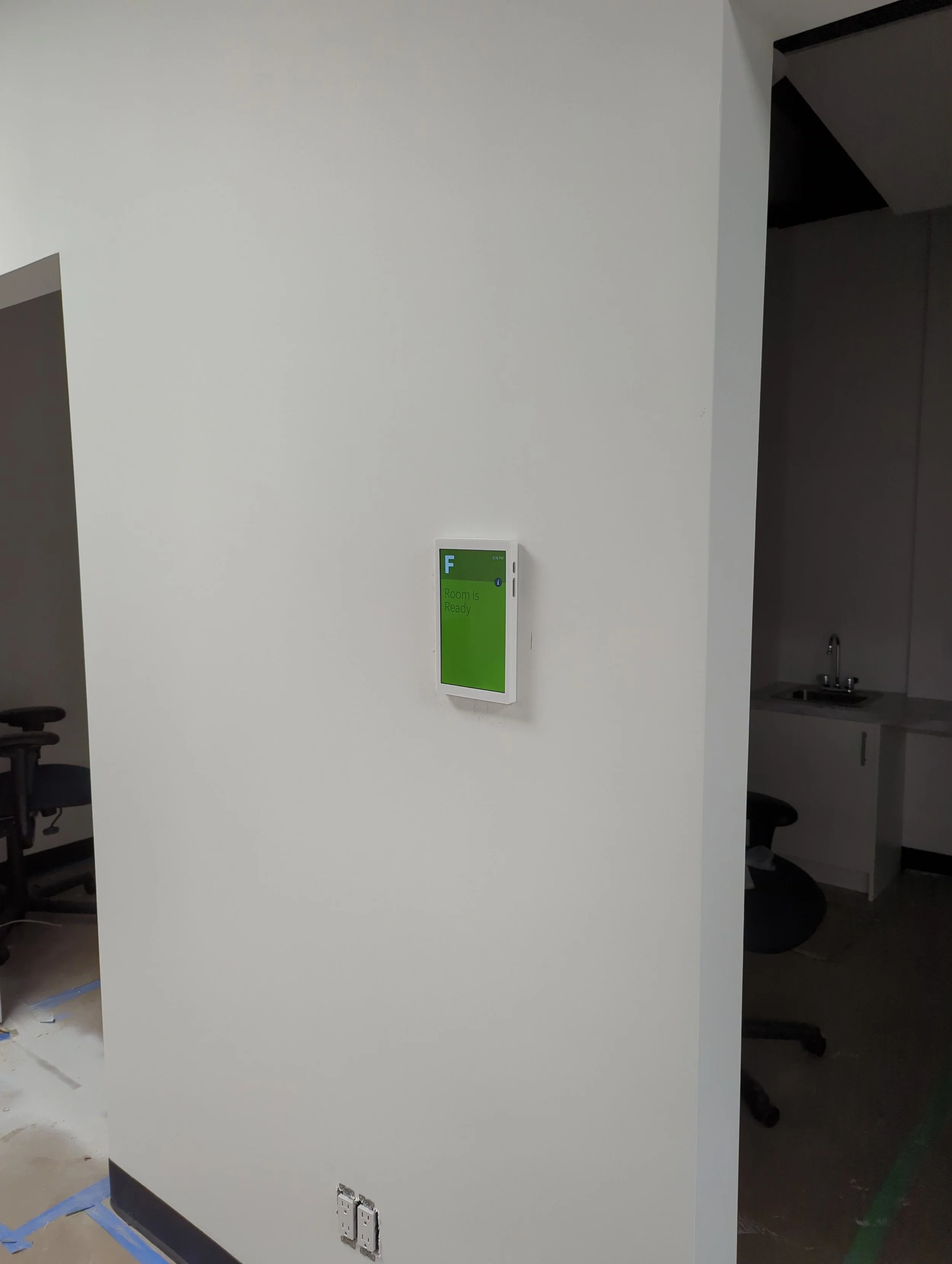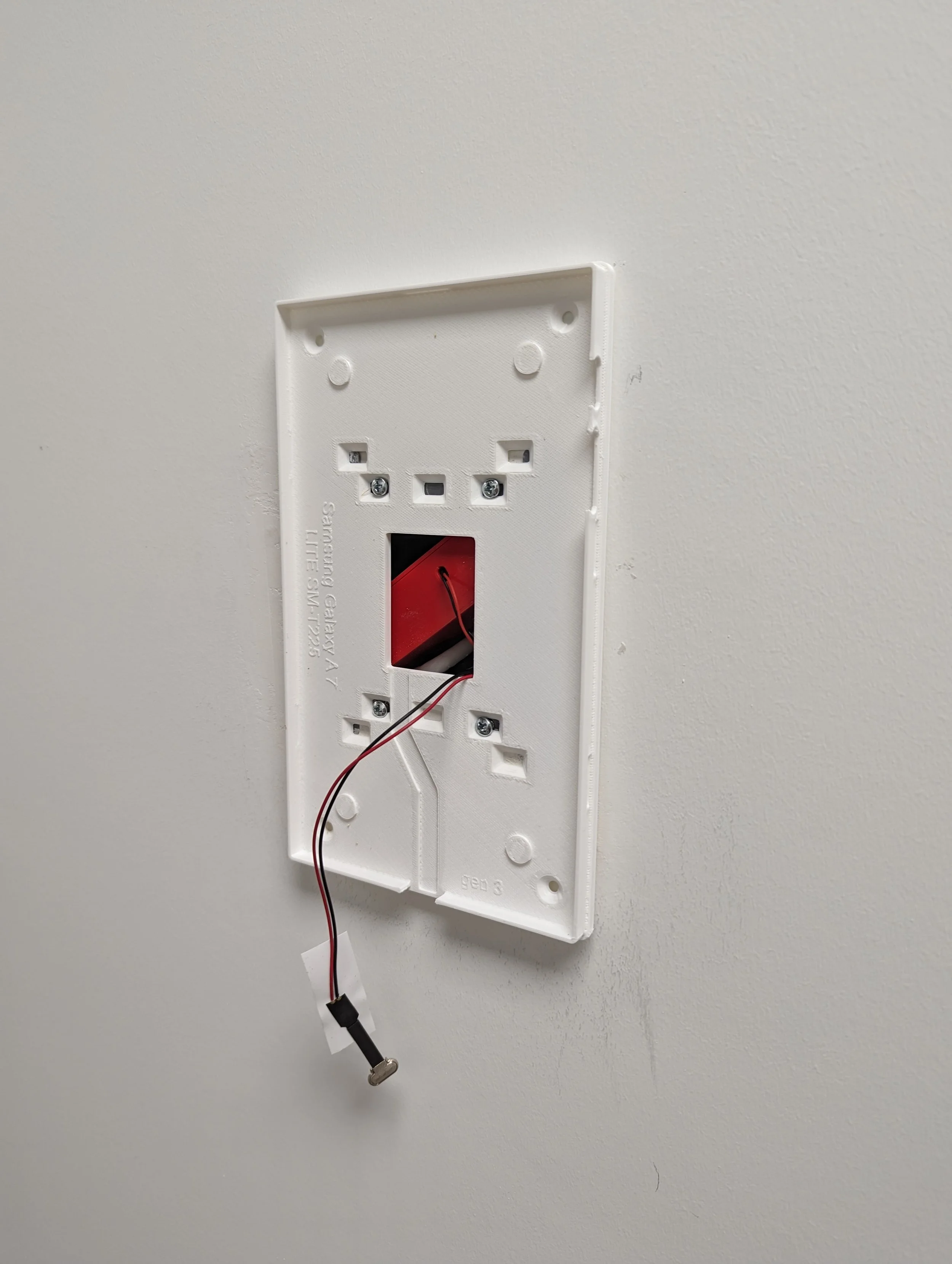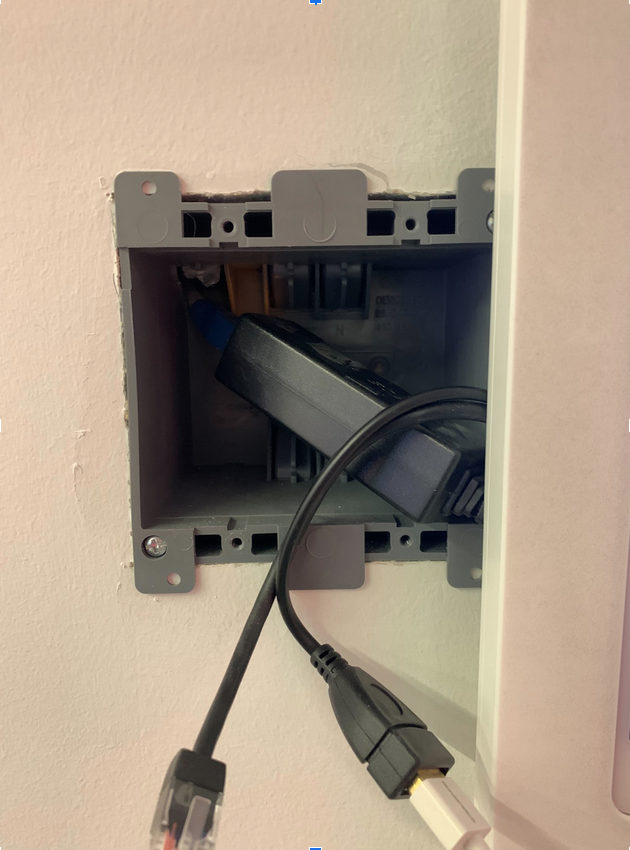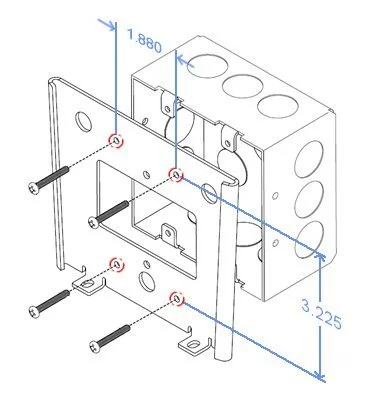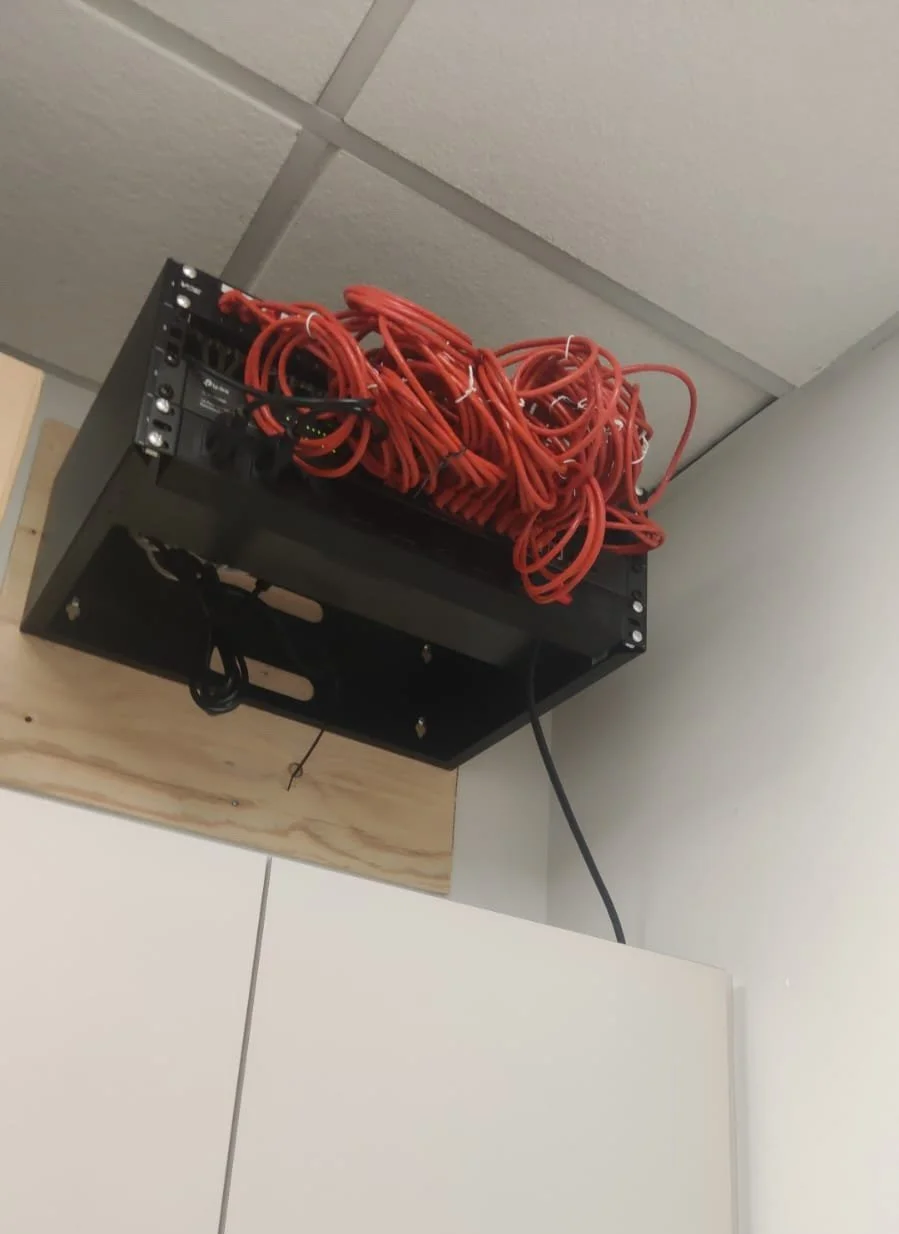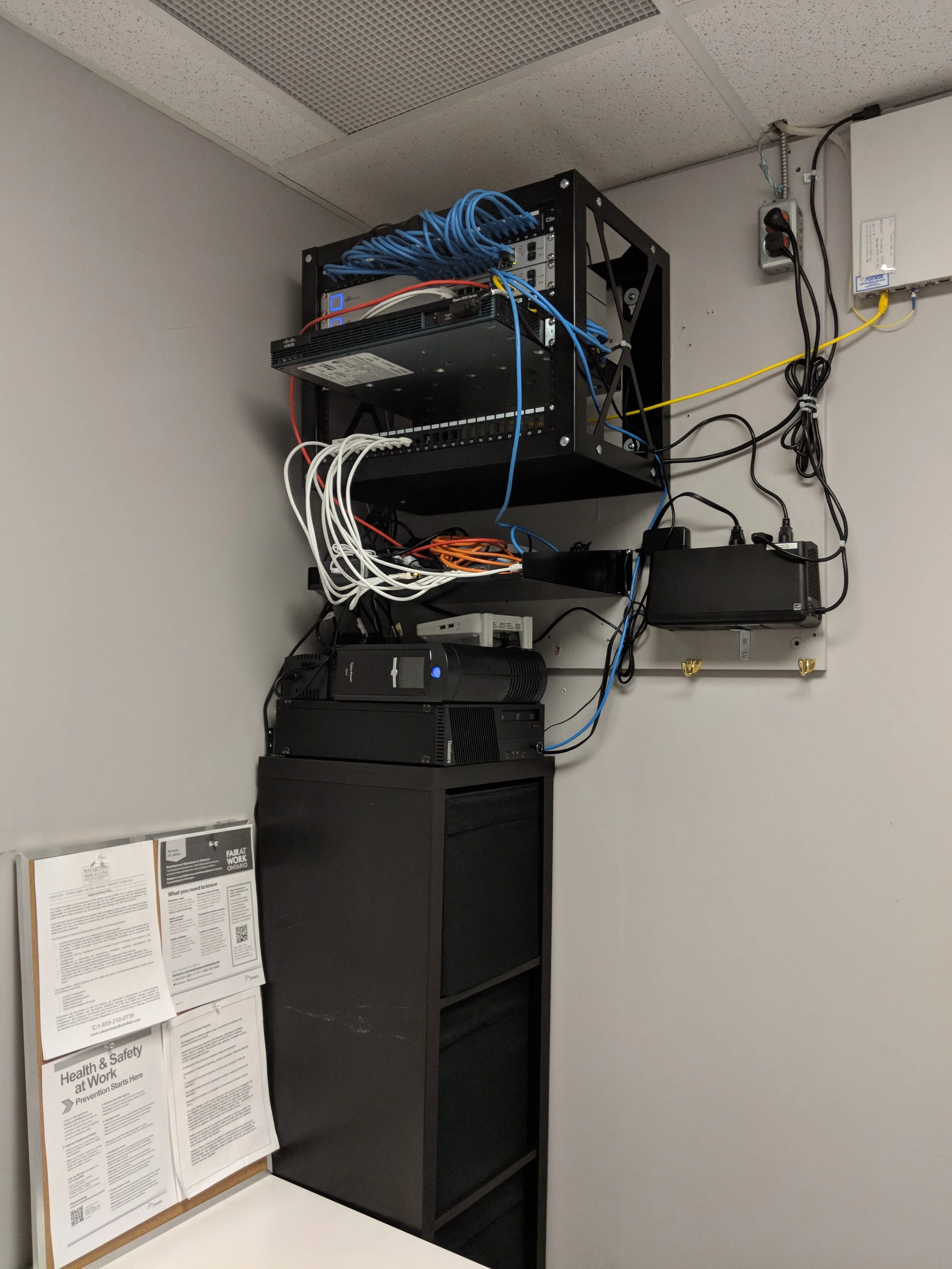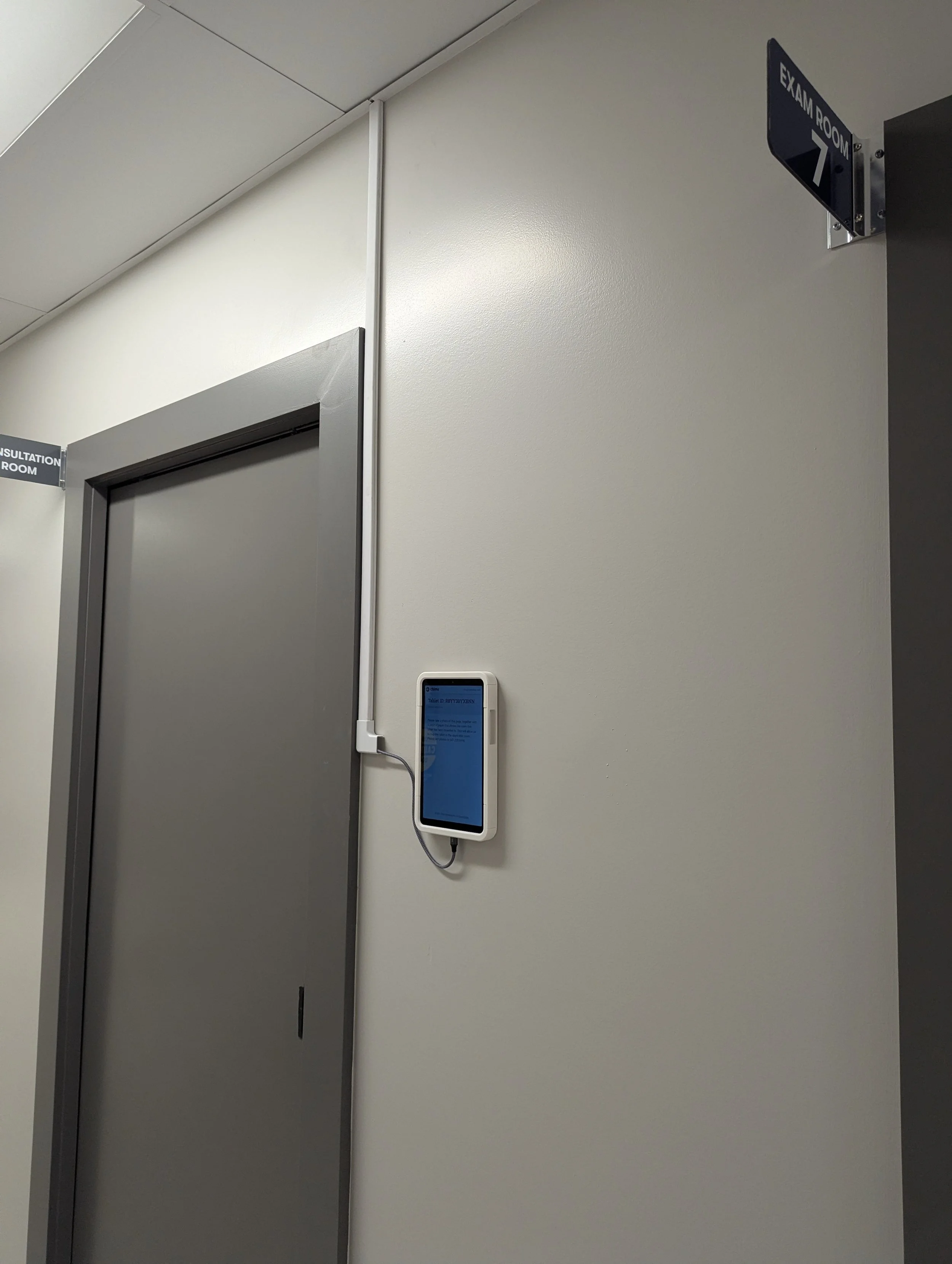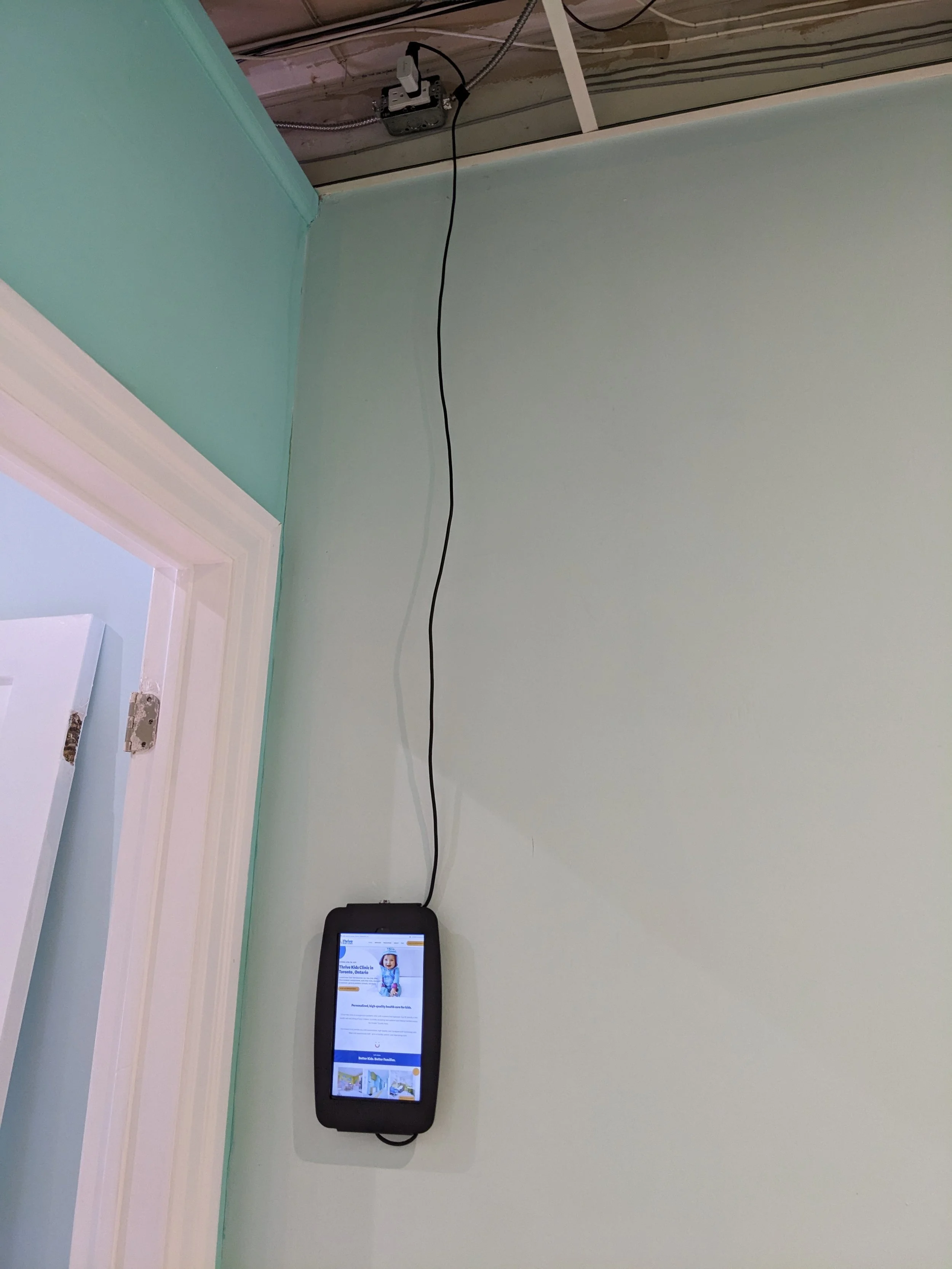Guides / Hardware & Wiring Requirements
CHIME Room Tablets
CHIME is a clinic workflow management system. It involves the deployment of a variety of hardware throughout a clinic, including waiting room screens and wall-mounted room tablets. This document outlines the recommended IT and electrical requirements to prepare a clinic for the installation of CHIME Room Tablets.
There are two goals when installing the tablets:
Securely mount a tablet, within an enclosure, onto a wall outside each relevant room; and
Provide power to each tablet without any visible wires.
The tablets will be connected to the internet via WiFi.
Mounting the tablets
We use 3D printed custom enclosures to mount the tablets to the wall. To provide robustness and a place for wires a 2-gang outlet box should be installed into the wall outside each relevant room. The enclosure is then attached to the gang box directly.
We recommend situating the gang boxes so that they are:
57 inches AFF to the midpoint of the gang box; and
12 inches from the side of the doorframe with the door handle.
We understand that this is not always possible. As such some discretionary placement will be required. If deviating from the above recommendation, please take into account any trim or other "protrusions' that might impact the ability to surface mount the tablet. A typical enclosure is roughly 10 inches tall and 6 inches wide and is installed in portrait mode.
When installing the gang boxes, it is important that they are installed level and flush with the drywall. We’ve seen gang boxes that are installed too deep or not level. Both are difficult to correct. If the gang boxes are installed correctly, the rest of the install is straightforward.
Note - we regularly update the exact tablet model that we deploy. We typically use Samsung Galaxy tablets but the exact model will vary over time. The approximate dimensions remain 10 inches by 6 inches though.
If the installation of a 2-gang outlet box is problematic, our custom enclosures support alternative mounting (although please discuss with us as some modifications will be necessary)
drywall directly
Sample 2-gang outlet boxes include:
Please verify before install the exact dimensions of the mounting holes though; they should be 1.88” apart horizontally, and 3.225” apart vertically per the screenshot on this page.
Powering the tablets
We are familiar with four options. All four have been successfully used.
OPTION 1 (preferred)
PoE with Central Injectors
This option involves running 23AWG solid bare copper plenum rated (CMP) UL listed Cat6 ethernet cables from the clinic’s patch panel in the server area to each gang box, with a male termination. The quality of the cable is important as it helps ensure enough power is supplied to the tablets.
We will supply the required number of PoE to USB Power Adapters which will be placed inside each gang box and covert the PoE to USB power. We will also supply PoE injectors. We usually supply 1 rack mounted PoE injector for every 10 tablets.
This is our preferred approach because the PoE injectors are all centrally located. However, it usually requires longer cable runs.
OPTION 2
PoE with Distributed Injectors
This option requires running ethernet cables from near any power outlet to each gang box, with a male termination. This can be done at any scale. For example, at the extreme, clinics have installed a separate PoE injector for every tablet, only running the ethernet cable a few feet within a wall for aesthetic purposes. That is, this is the final outcome:
an ethernet port is installed adjacent to an existing 120V power outlet
a PoE injector is plugged into the power outlet
a short ethernet cable connects the PoE injector and ethernet port
the other "end” of the ethernet port is located only a few feet away, within a gangbox
a PoE adapter is connected to that other end, and left within the gangbox
the PoE adapter powers the tablet mounted to the gangbox
This can be sometimes the dramatically cheaper approach because the cable runs can be significantly shorter. However, the PoE injectors end up spread out across the clinic.
OPTION 3
Standard 120V Power Outlets in the Ceiling and Long USB cables
Alternatively, the tablets can be powered via a normal power outlet in the plenum above a drop ceiling. This option requires plugging an ordinary USB power adapter into the power outlet and using a long (e.g. 10ft) USB cable to connect to the tablet.
This USB cable could be pulled within the wall to fully hide all cables, although conduit may be required by code depending on the jurisdiction.
Alternatively the USB cable could be surface mounted through a cable run.
OPTION 4
Recessed Standard 120V Power Outlets
Alternatively, it might be possible to install a recessed power outlet, potentially with built in USB power, directly where the tablet should go.
If this approach is adopted, it is important to consult with your CHIME Account Manager to ensure the recessed power outlet selected has enough space to accommodate the required equipment and cabling, and also to allow the mounting of the tablet.

